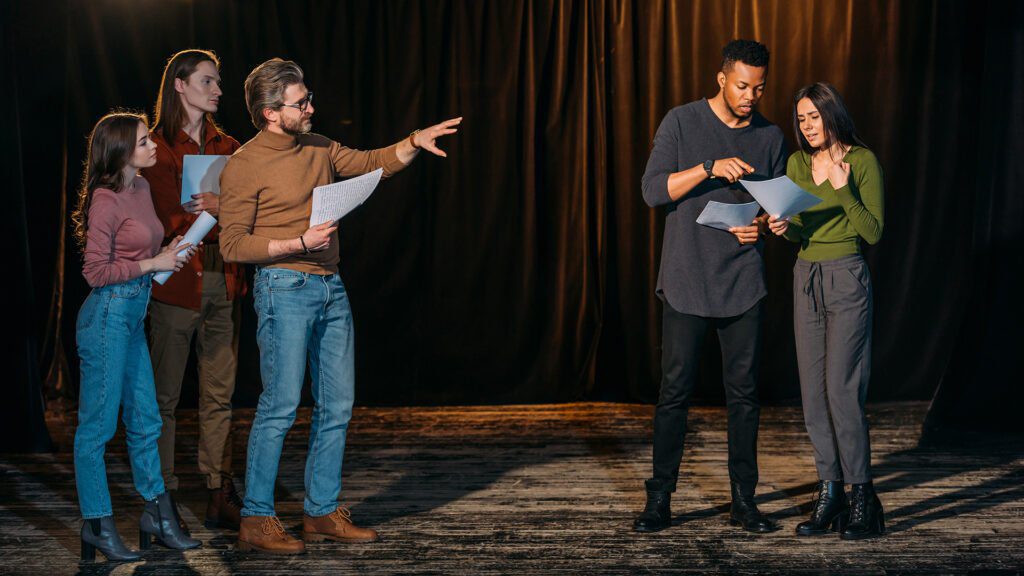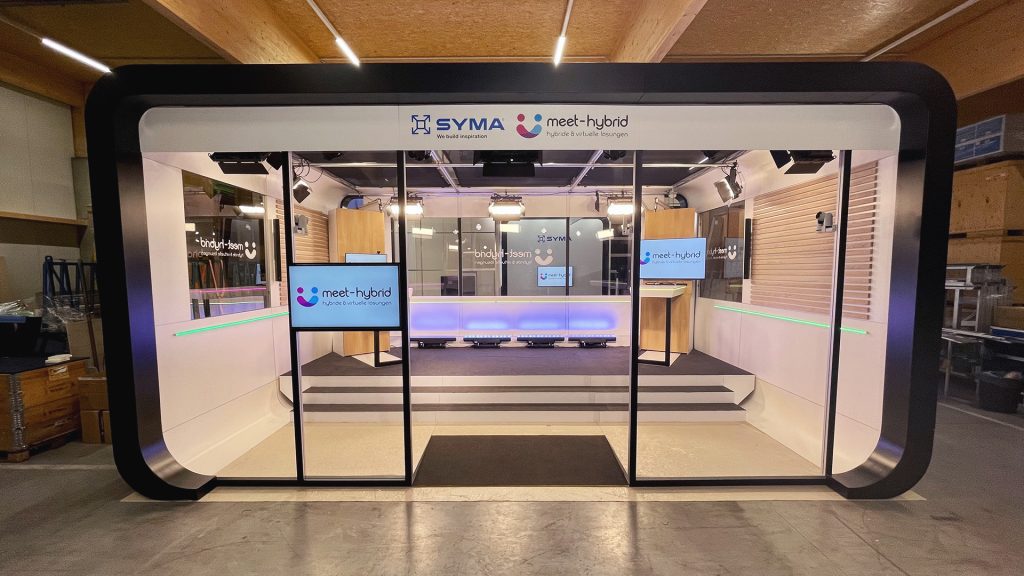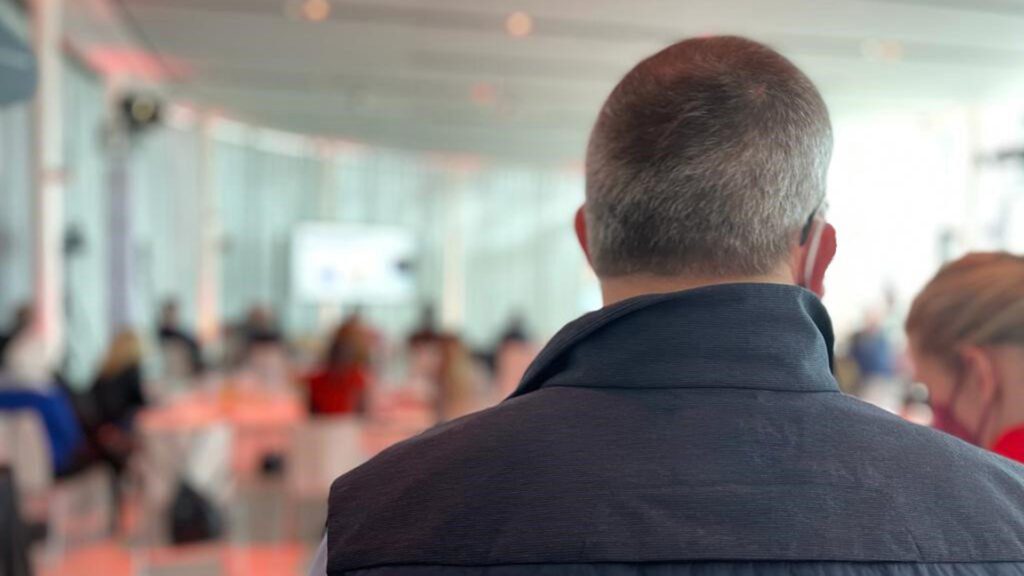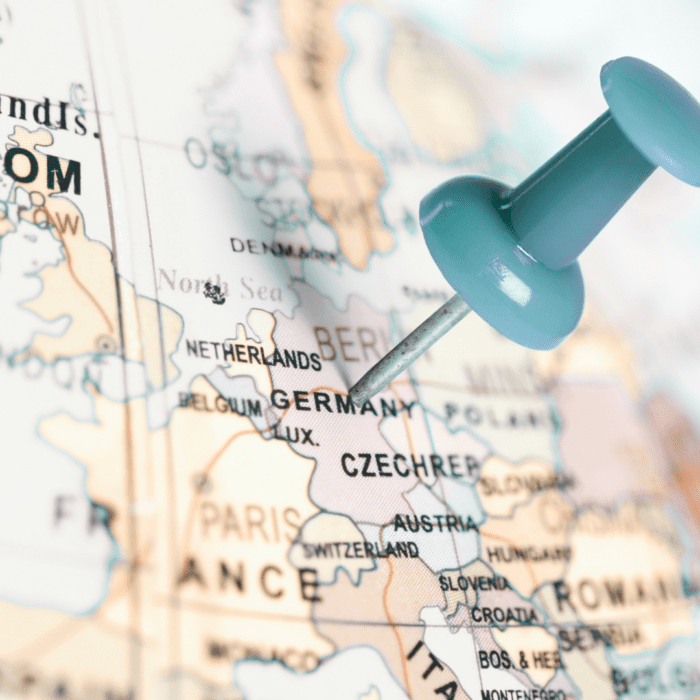Michael Kremnitzer has been complementing the SYMA team of experts as an external partner for several years and was also significantly involved in the development of the meet-hybrid Studio Cube. His special passion is storytelling, staging and creating special trade fair experiences. In an exciting interview, we received valuable input on the general topic of storytelling at the trade fair stand, as well as some practical insider tips. In the third and final act of the blog series, we share his personal thoughts on the topic, talk about challenges, and look to the future. Clear the stage and raise the curtain, here comes our storytelling expert!
The importance of storytelling at the trade fair stand
Staging Stories. Shape. Directing like in movies. That’s what storytelling at the trade fair stand means to our expert. It’s simply a proven method of passing on information in a cleverly packaged way.
“Storytelling has always been there, like the folk song originally.”
Trade fair communication is loud and wild, a deliberately designed trade fair architecture can reflect this experience in a more targeted way. It is precisely with this live experience and the design in the stand construction that storytelling begins. The companies do the groundwork and provide the basis or input for the story. Values and information to be communicated are summarized like a short summary. This serves as our basis – from which a lively story is spun. For a higher attention of the fair visitors, information is thus nicely packaged and decorated with a load of emotions, which makes it easier to absorb.
Where is storytelling possible everywhere at the trade fair stand?
In short, storytelling is possible in all facets. Often forgotten in the process are the trade fair staff. Yet this is precisely an important component of the narrative. They are the actors, the ones who bring the story to life and carry it out into the world. Their outfits, rituals, routines and interactions with fairgoers play an essential role in the overall story. You need to proactively go out, reach out to people and tell the story in a consistent way.
“This can be rehearsed and practiced, like in the theater. A script (i.e. the story) can be created especially for the trade fair and then acted out. In this process, the trade fair team takes on the role of puppeteers. They can then direct two actors in a portrayed trade show conversation. This involves telling them how to react, what the body language should be and what is being said. This is filmed and discussed afterwards. That way, the salespeople feel less attacked than if they get a video analysis of their own trade show conversation.”


A look into the future: what does modern storytelling through virtual supplements look like?
There are countless virtual opportunities, but the great danger here is to succumb to these temptations.
“A lot of it is just superficial showmanship, whereby the dose has to become stronger and stronger in order to still be able to generate the WOW effect. Somewhere along the line, however, people can no longer absorb it. That’s why it’s always important to put yourself in the position of the booth visitor.”
Our storytelling expert therefore advises to limit oneself to the activation of emotions and to address all senses equally. Often it doesn’t take much high-tech at all – but the overall mood has to be right. However, the use of technical aids should not be discarded for this reason. Rather, they need to be tailored to the industry, the target group and the generations.
“You have to keep your finger on the pulse and not be late with technical resources either.”


Our storytelling expert on risks and dangers
By processing information in a story, emotions are addressed. With regard to the dangers, however, one must be aware that negative emotions can of course also be triggered in the process.
“There must also be no overloading and flooding: Reduction to 3 central contents is important and an emotional situation that also carries the contents must be found.”
Of course, this requires the information and underlying content to be transported correctly. That’s why agreement and regular consultation with the client is important, so that the narrative is really their brand story.
Is storytelling always necessary or can it be done without?
“Nothing wrong with a pleasant package, is there?”
Storytelling serves to convey content, it generates memories due to anchoring. For this purpose emotions are linked with information to a story and staged appropriately. From that perspective, storytelling has never really hurt as long as you’re being intentional about it.
“You have to hit the right note, not just toot your own horn, but light a fire in others to be able to present your own story.”


Practical tips for staging
Just like on a film set, it should be the same on a trade fair stand. The trade fair stand is the stage set, the stand personnel are the actors – the concept behind it tells the respective story. The exhibition stand can be seen like a stage, the partial aspects of the story are put together bit by bit, like the composition of a play. So it’s always just about the appropriate recipe. For the director, respectively the booth builder, it is important to know which element is taken for which effect or statement of the story. The right recipe must be created carefully and consciously. This is a craft where climaxes, like in a drama, must be created. What then must not be forgotten at the end:
“The whole work only works with an audience!”
That is why it is so important to know and understand the target group as well as possible in advance, also for trade fair planning and stand construction. If you also already know the information you would like to present at the trade fair stand, we can already write the right story for you, together with storytelling expert Michael Kremnitzer, and stage it at your trade fair stand. Contact us straightforwardly for a detailed briefing discussion about storytelling for your next trade fair stand.





